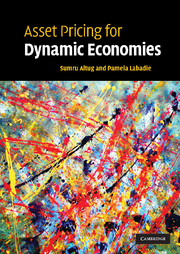13 - Models with cash-in-advance constraints
Published online by Cambridge University Press: 01 June 2010
Summary
The effects of money and nominal variables on the real economy have been studied extensively. The apparent lack of consensus on how money and monetary policy impact the economy reflects the difficulty of the questions that are raised when money is introduced into a model of the economy. A standard introductory discussion of the role of money highlights its importance as a store of value, medium of exchange, and unit of account. In a model of complete Arrow-Debreu contingent claims, there is no role for money because all transactions in the form of trades of physical goods and dated goods can be carried out in the contingent claims market. Indeed all trades can take place at time zero, before any uncertainty is resolved, or sequentially over time, resulting in identical allocations. Since all trading is centralized, there are no problems with a double coincidence of wants or need for a durable asset. Money is a redundant asset and its introduction leaves allocations unaffected.
One approach to incorporating money is to assume that money must be used to carry out transactions. The cash-in-advance model is an example of this sort of model. As we will show below, this model is equivalent to imposing a borrowing constraint on agents: consumption can be carried out only with current wealth and there is no borrowing against future income.
Information
- Type
- Chapter
- Information
- Asset Pricing for Dynamic Economies , pp. 373 - 421Publisher: Cambridge University PressPrint publication year: 2008
